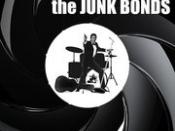Junk bonds, also known more respectfully as high-yield securities, are debt instruments that are issued by corporate borrowers and which the major bond-rating agencies say are less than "investment grade." A corporate bond is considered "junk" if it is rated as BaA or lower by Moody's or Ba3 or lower by Standard and Poor's bond-rating services. Bond ratings measure the riskiness of bonds (that is, the chance that the issuer will be unable to make interest payments or repay the principal). The riskier a bond, the lower its rating.
Bond investors have traditionally been a risk-averse bunch, and as such have tended to stay away from low-grade bonds regardless of the potential return. Prior to the 1970s, the only junk bonds came from companies that had previously been investment grade, but had gone into decline. Their interest yields at face value had not been very high, but with the bonds selling at a fraction of face value, the implied yield for secondary purchasers was quite high.
(1)The factors contributed to the growth of the junk bonds market
There are basically four reasons for its growth: increasing unpopularity of private placed bonds, development of market makers, changing risk perceptions, and merger demand.
First, Private placed bonds, which are bonds that are sold to a small group of investors privately, became unpopular for two reasons. The first reason was restrictive covenants. Restrictive covenants are restrictions that the purchasers require from the issuers before purchase, to limit the actions the firm can take. In addition, there were no standard contracts for bonds, which made secondary market sales hard. The unpopularity of private placements created an opportunity for public issues.
The second reason for growth of junk bonds was the development of market makers. Market makers are entities serving as an agent of liquidity...


